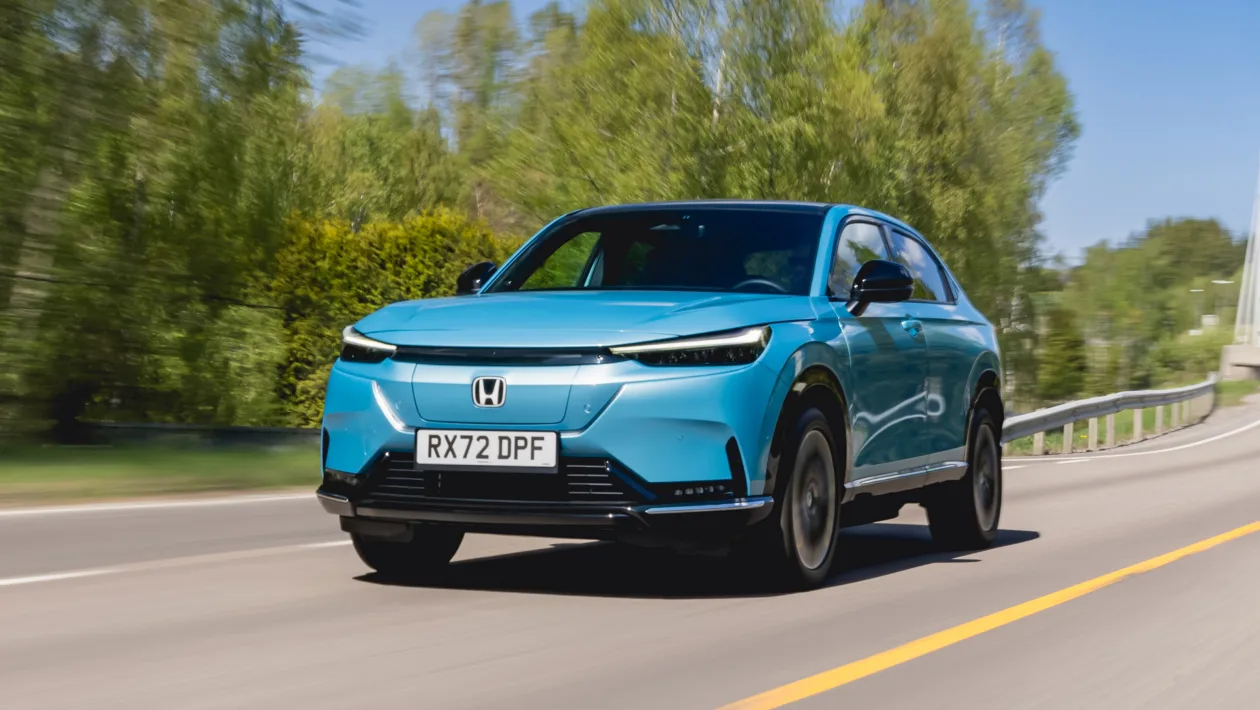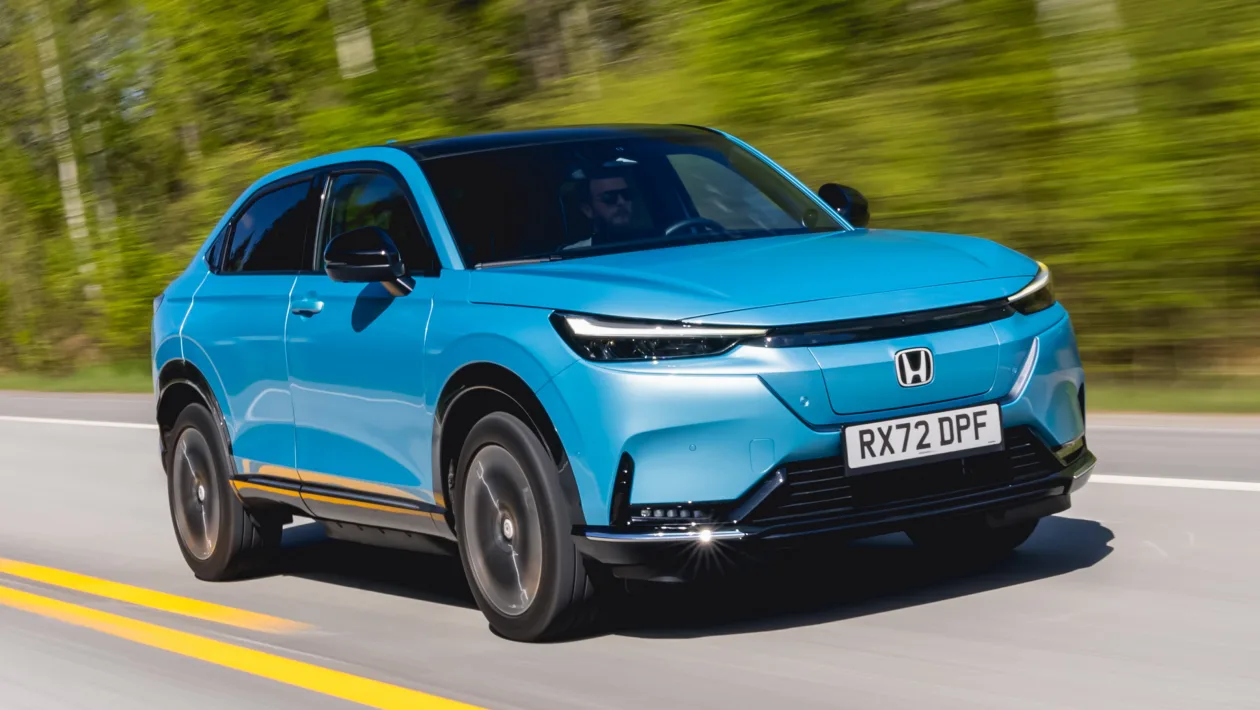We test out the oddly named Honda e:Ny1 SUV as it hits the road in Europe.
Honda has reinvented its range with a small HR-V, a new mid-size ZR-V, and a larger CR-V on the way. These cars have also been joined by the rather awkwardly named e:Ny1 (we’re not sure why Honda didn’t call it ER-V), the firm’s second electric car in Europe alongside the Honda e city car.
It remains unconfirmed for Australia but is beginning to get traction in Europe where our colleagues at Auto Express had their first drive.
The e:Ny1 is a similar size to the HR-V hybrid, and while it shares some styling cues, the new car is actually based on a bespoke ‘F’ platform. This houses a 68.8kWh battery, giving a claimed range of 412km, which is a relatively modest figure, given that the 65kWh Hyundai Kona Electric offers up to 514km.
Honda says that this isn’t a problem because charging at up to 78kW means a 10-80 per cent top-up takes around 45 minutes – but again, this is behind the best in this class. Honda says it has focused on maintaining the average charge speed rather than a peak, claiming less of a drop off at either end of the charging curve.
There is also a clever feature that lets owners assess the charging status at a glance. An LED strip above the charging port pulses from left to right – like a digital heartbeat, Honda says – as the car is topped up. It can send several other messages, too.
The e:Ny1 features a 110kW motor on the front axle for a 7.6-second 0-100km/h time. On the move it feels zippy, with up to 310Nm of torque delivered instantly. But then that is the same for many EVs. What’s key to the e:Ny1’s performance is that Honda claims it’s around 100kg lighter than some rivals, thanks to lightweight materials, including a blend of high-tensile steels. However, this is not quite the case, because Hyundai claims the Kona Electric’s kerbweight is in the same region.
Even so, the Honda handles sweetly. There’s a good level of agility, plus precise, well weighted steering – a Honda trait – and although the e:Ny1 feels similar in many ways to a Civic, there is more roll due to this SUV’s higher ride height. There’s also more road noise in evidence, but this is a small car that rides relatively well.
One area that could be improved is the Honda’s regenerative braking. The various levels are adjustable using the steering wheel-mounted paddles, but the system defaults back to its standard mode after a little while. The only way to hold your chosen level of regen is to select Sport mode. But this doesn’t alter the car’s character too much and seems like a needless setting. It’d be nice if the top level of brake regen was stronger too, because it doesn’t allow anything even remotely approaching one-pedal driving.
Despite its compact dimensions, the e:Ny1 isn’t quite as tight inside as you might imagine. There’s decent legroom, and headroom is also fine. The boot capacity is an average 361 litres.
The cabin is one of the e:Ny1’s strong points, though. At its heart is a 15.1-inch touchscreen with over-the-air software update capability, and it’s backed up by a 10.25-inch digital dash.
The main panel is divided into three parts; the top shows sat-nav instructions or displays Apple CarPlay or Android Auto, the middle is for apps and is customisable, while the bottom part shows the climate controls. The screen responds well to touch inputs and is a nice focal point in the cabin. Sometimes it can be confusing where to find items on the zonal layout, because there’s a lot of information on one panel, but on the whole it works well here. Both available trim levels get this set-up.
The range starts with the Elegance, but it’s the higher-spec Advance model that is expected to account for the majority of sales. This features equipment including a panoramic roof on top of everything else you’d expect, such as heated seats, sat-nav and various camera views, plus plenty of safety kit.
Name aside, the Honda e:Ny1 is a solid addition to the compact electric crossover class – a sector of the market that’s booming. However, while it drives nicely and offers some good tech, it doesn’t excel in any one area, and its range and charging capability are more limited than its main rivals.









